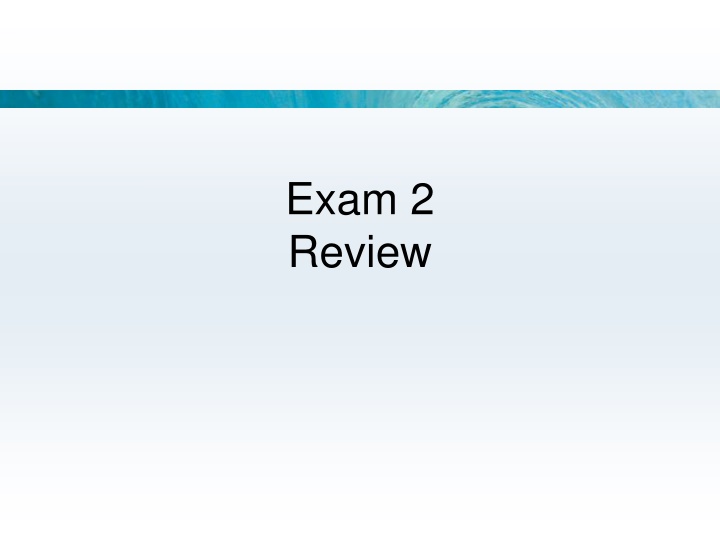
Ultimate Exam Preparation Guide for Computer Science Students
Master the key concepts in computer science with this comprehensive exam review guide. From debugging techniques to computer operation principles, digitizing multimedia to CPU instructions, this resource covers everything you need to ace your upcoming exams. Dive into a wealth of information to enhance your understanding and boost your confidence for exam success.
Download Presentation

Please find below an Image/Link to download the presentation.
The content on the website is provided AS IS for your information and personal use only. It may not be sold, licensed, or shared on other websites without obtaining consent from the author. If you encounter any issues during the download, it is possible that the publisher has removed the file from their server.
You are allowed to download the files provided on this website for personal or commercial use, subject to the condition that they are used lawfully. All files are the property of their respective owners.
The content on the website is provided AS IS for your information and personal use only. It may not be sold, licensed, or shared on other websites without obtaining consent from the author.
E N D
Presentation Transcript
Exam 2 Review
Exam Structure Standard bubble form Bring a #2 pencil! True/False, Multiple Choice Study Hints Read text Do review questions Review all notes Review all labs
Debugging Common errors Debugging procedure Reproduce, pinpoint, eliminate obvious, isolate Errors in HTML, CSS Software failure
Digitizing Discrete vs. continuous PandA Binary and bits Number systems Binary Hex Decimal
Digitizing (Contd) Text ASCII Unicode Metadata
Digitizing Multimedia Images Pixels/subpixels Color (RGB) Compression (JPEG) Sound Intensity Frequency Sampling rate and Nyquist rule Compression (MP-3)
Digitizing Multimedia (Contd) Video Sequence of images Compression (MPEG) OCR VR
Digitizing Multimedia (Contd) Latency Bandwidth Bias-Free Universal Medium Principle
Computer Operation Computer CPU Control Unit ALU Memory Input Output
Computer Operation (Contd) Memory Addresses Bytes Words RAM
Computer Operation (Contd) Peripherals Drivers Video card/GPU, Hard disk Capacity Speed
Computer Operation (Contd) Fetch/Execute cycle Fetch and PC Decode Data Fetch Execute Write Result
Computer Operation (Contd) CPU instructions MIPS, FLOPS Clocks and Hz Pipelining
Computer Operation (Contd) Languages and translation Binary object files Assembly High-level languages
Computer Operation (Contd) Operating Systems (OS s) Resource manager Windows, Mac OS X, Linux, Android, iOS Software stack IC s Photolithography Transistors Moore s Law
